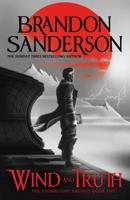Publisher's Synopsis
Alessandro Grandi (ca. 1586-1630) is best known as the first composer to use a form of the word "cantata" to describe a set of musical compositions (for his Cantade et arie, ca. 1618) and as Monteverdi's vice-maestro di cappella at San Marco in Venice during the 1620s. His first published music, the Primo libro de motetti a due, tre, quattro, cinque, & otto voci, con una Messa à quattro (Venice, 1610), contains two fairly conventional compositions, a polychoral motet and a four-voice setting of the Ordinary of the Mass. The core of the collection, however, is a set of innovative few-voice motets in which Grandi introduces a variety of novel formal schemes and compositional techniques. He juxtaposes short motives in ways that suggest both dialogue techniques and the concerato interplay of voices common in the lighter secular genres. Several motets employ parlante subjects that recall the clipped diction of Monterverdi's fourth and fifth book of madrigals, and Grandi's quasi-canonic entries built over harmonic sequences evoke duet passages from the continuo madrigals that close Monteverdi's Fifth Book. In short, Grandi's Primo libro de motetti shows that he helped to forge the concertato style in the early years of the seventeenth-century. This new series of publications will be edited by an editorial team headed by Jeffrey Kurtzman, in collaboration with Dennis Collins, Robert Kendrick, and Steven Saunders. Grandi's first published music, the Primo libro de motetti a due, tre, quattro, cinque, & otto voci, con una Messa à quattro (Venice, 1610), contains two fairly conventional compositions, a polychoral motet and a four-voice setting of the Ordinary of the Mass. The core of the collection, however, is a set of innovative few-voice motets in which Grandi introduces a variety of novel formal schemes and compositional techniques. He juxtaposes short motives in ways that suggest both dialogue techniques and the concerato interplay of voices common in the lighter secular genres. Several motets employ parlante subjects that recall the clipped diction of Monterverdi's Fourth and Fifth Books of Madrigals, and Grandi's quasi-canonic entries built over harmonic sequences evoke duet passages from the continuo madrigals that close Monteverdi's Fifth Book. In short, Grandi's Primo libro de motetti shows that he helped to forge the concertato style in the early years of the seventeenth-century. For more information, see http://www.corpusmusicae.com/cmm/cmm_cc112.htm

























